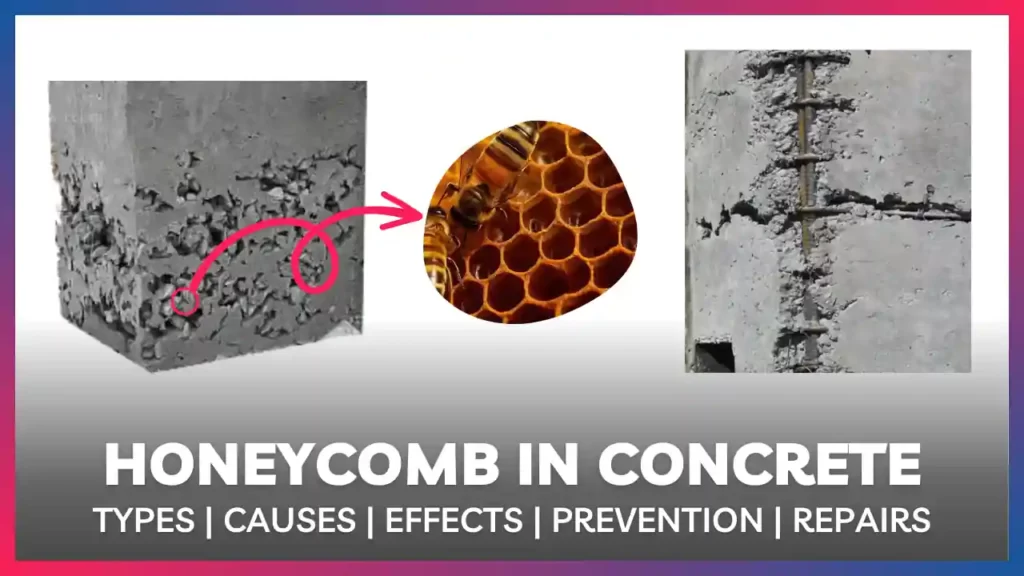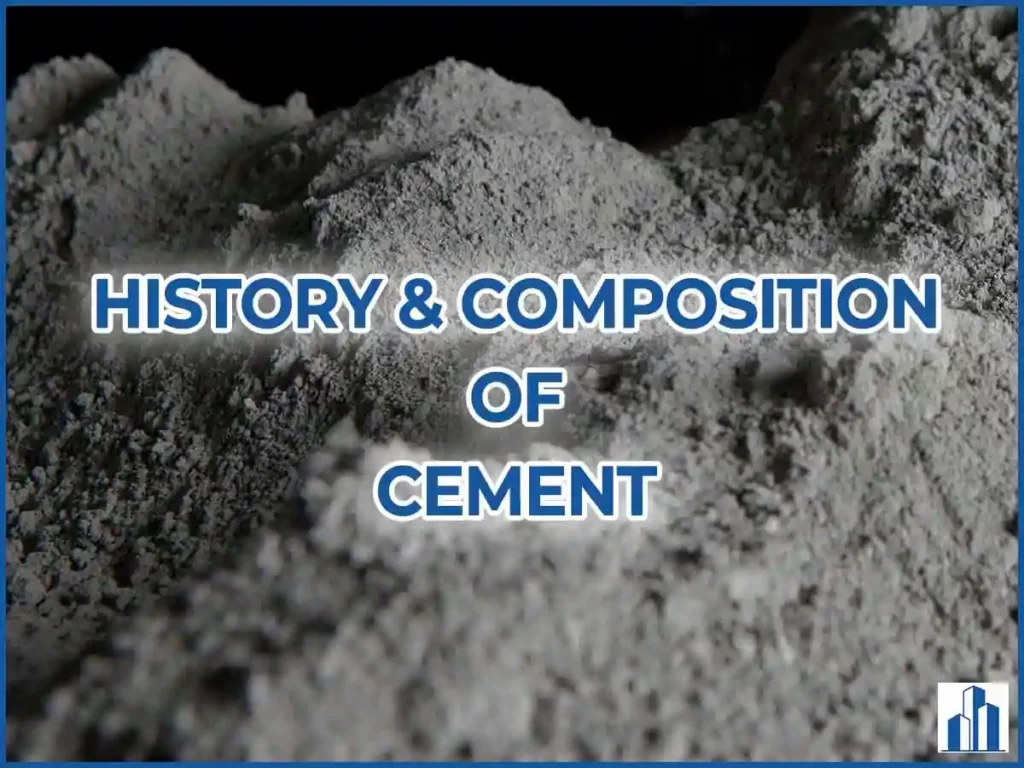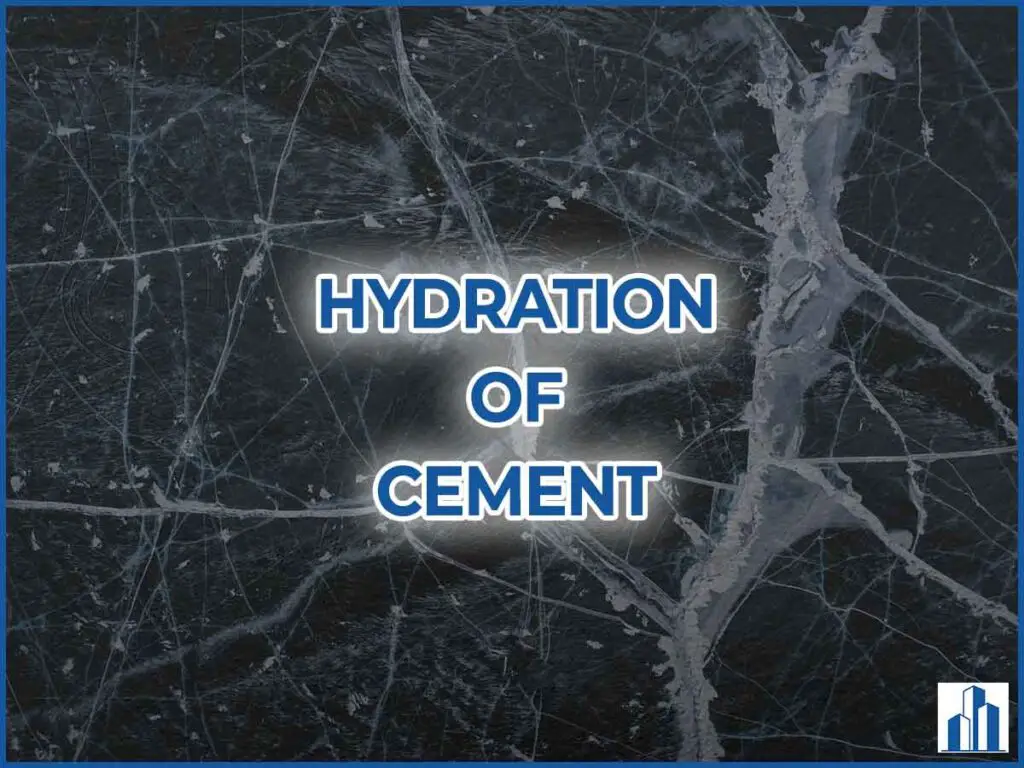What is honeycomb in concrete?
Honeycomb in concrete refers to the voids or cavities present within the concrete matrix. The voids are formed due to the entrapment of air or insufficient filling of concrete during the casting process. It gets the name honeycomb because these voids resemble the shape of honeycomb cells.
It is typically caused by many factors such as inadequate compaction of concrete, poor mix design, poor work practices, etc.
Honeycomb commonly occurs in the vertical faces of beams, columns, and even slabs. It is visible only after the removal of formwork. If left unsupervised, honeycomb in concrete becomes a serious issue, affecting the structural integrity and durability of the structure.
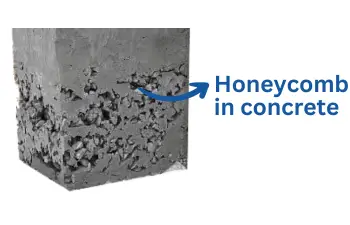
Types of honeycomb in concrete
There are different types of honeycomb in concrete based on their,
- Place of formation
- Size of honeycomb
1) Place of formation
Honeycombs can be formed in different places in the concrete elements such as,
- Surface honeycomb and
- Internal honeycomb
a) Surface honeycomb
Surface honeycomb typically refers to the presence of voids or cavities on the surface of the concrete elements. It occurs due to the inadequate compaction of concrete leading to the accumulation of air voids near the formwork structure.
When air voids are present, they push the concrete matrix away from them leading to the formation of cavities. It is visible to the naked eye after the removal of formwork.
It affects the aesthetic appearance of the concrete surface and if it is deep enough, it can even impact the structural integrity of the concrete element.
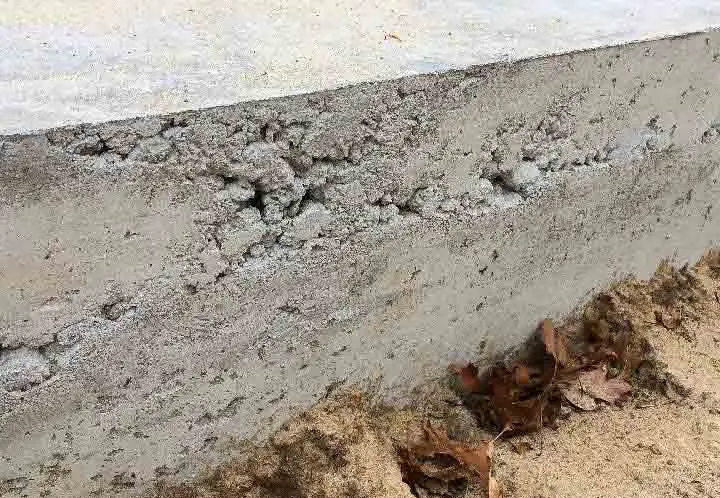
b) Internal honeycomb
Internal honeycomb refers to the presence of voids or cavities inside the concrete elements. It occurs due to inadequate compaction of concrete or due to poor mix design. It mostly happens when the concrete mix is too dry.
With inadequate compaction, the dry concrete mix wasn’t able to consolidate well enough which leaves voids or cavities inside the concrete structures.
The real problem is, It is not visible to the naked eye after the removal of formwork, so most of the time, we didn’t know that there was a honeycomb in the structure.
Normally, the internal honeycomb didn’t form as much compared to the surface honeycomb but if you have any doubts regarding their presence, then we can check it by carrying out an ultrasonic sound test.
2) Size of honeycomb
Based on the size of the honeycomb, it is classified as,
- Small-sized honeycomb
- Medium-sized honeycomb
- Large-sized honeycomb
a) Small-sized honeycomb
Small-sized honeycomb refers to small voids or cavities present on the surface of the concrete. It is visible only after a close inspection.
The depth of these cavities are far less than 25mm and as a result, these small-sized honeycombs don’t posses a serious threat to the structural integrity of the structure, it only affects the aesthetic appearance slightly.
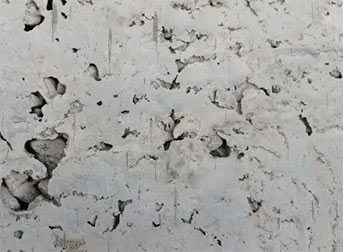
b) Medium-sized honeycomb
Medium-sized honeycombs consist of voids or cavities that are larger than the small-sized honeycombs. The depth of these voids can be more than 25mm but not enough to expose the reinforcement bars.
It doesn’t readily affect the structural integrity of the structure, but it can provide a passage for the movement of moisture into the concrete structure, which in turn causes many problems such as carbonation of concrete, corrosion of steel reinforcement, etc.
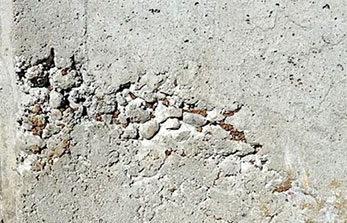
c) Large-sized honeycomb
Large-sized honeycomb refers to the significantly larger diameter of voids or cavities that are clustered around the areas of incomplete concrete filling.
In this type of honeycomb, the steel reinforcement bars are exposed resulting in possessing a serious threat to the structural integrity and durability of the concrete structure.
This type of honeycomb should be repaired as soon as possible. If the repair process is slowed, then the reinforcement bar becomes into contact with the moisture in the atmosphere and begins to corrode.

Causes of honeycomb in concrete
The honeycomb in concrete may be caused due to the following reasons,
1) Inadequate compaction or vibration of concrete while casting the concrete element
2) When the workability of concrete is too low for the structural element
3) It can happen when there is a presence of foreign materials during the concrete placement process
4) Use of excessive reinforcement is also a major cause of honeycomb in concrete. It prevents the concrete from reaching all the internal places.
5) Poor mix design with improper water-cement ratio
6) Poor arrangement of formwork which leads to the loss of cement slurry
7) It can happen if the side cover for the structural element is inadequate
8) Concreting in extremely cold or hot weather conditions can increase the risk of honeycomb due to reduced workability
9) Any disturbance to the formwork after pouring the concrete can also induce a honeycomb in the concrete
10) Pouring concrete from greater heights can separate the materials from the concrete matrix and can induce honeycombs.
Effects of Honeycomb on concrete structures
Honeycomb possesses significant consequences on the structures, some of them are listed below.
1) Reduces the load-bearing strength of the structure
2) Increase the permeability of the structure which in turn leads to many problems like corrosion of the steel reinforcements, chloride attacks, etc.
3) Decreases the durability of the structure
4) Decreases the life expectancy of the structure
5) Makes the structure aesthetically unappealing
How to prevent honeycomb in concrete structures?
1) Use a suitable mix design for appropriate concrete elements with suitable aggregates and admixtures.
2) Ensure proper compaction and vibration during concrete placement
3) Give appropriate spacing between the reinforcement bars so that the aggregate can pass between them
4) Inspect both formwork and concrete for the presence of foreign materials
5) Check the integrity and arrangement of the formwork before pouring concrete
6) Always provide adequate side clear cover to the concrete elements
7) Use optimum water content to prevent any segregation and bleeding of concrete
8) Ensure that the free fall of the concrete is within the allowable limit
How to repair honeycomb in concrete?
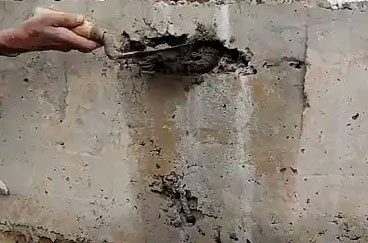
1) The first step in repairing a honeycomb is to act quickly. As soon as the formwork is removed and a honeycomb is spotted, it must be repaired soon, if not it can allow the moisture from the atmosphere to the embedded reinforcement and kick start the corrosion process.
2) Next clean the surface of the honeycomb area with the help of a wire brush to brush off any loose aggregates. Sometimes hammering may be done to remove any intact loose aggregates from the surface. After dusting off the aggregate it is important to clean the surface with water pressure washers.
3) Once the surface is properly prepared, plastering is applied to address the honeycomb. The plastering material selected should be compatible with the existing concrete elements.
4) While plastering, make sure to completely fill the voids and create a smooth texture by applying methods such as troweling.
5) After the application of plaster, appropriate curing methods should be implemented to promote the proper hydration and development of the repaired area.
It is important to note that the repair process described here is general, in some cases the repair process requires additional steps depending upon the severity of the honeycomb.
Hope you understand everything you need to know about honeycomb in concrete. If you find this article helpful, let us know in the comment section.
Read more:
